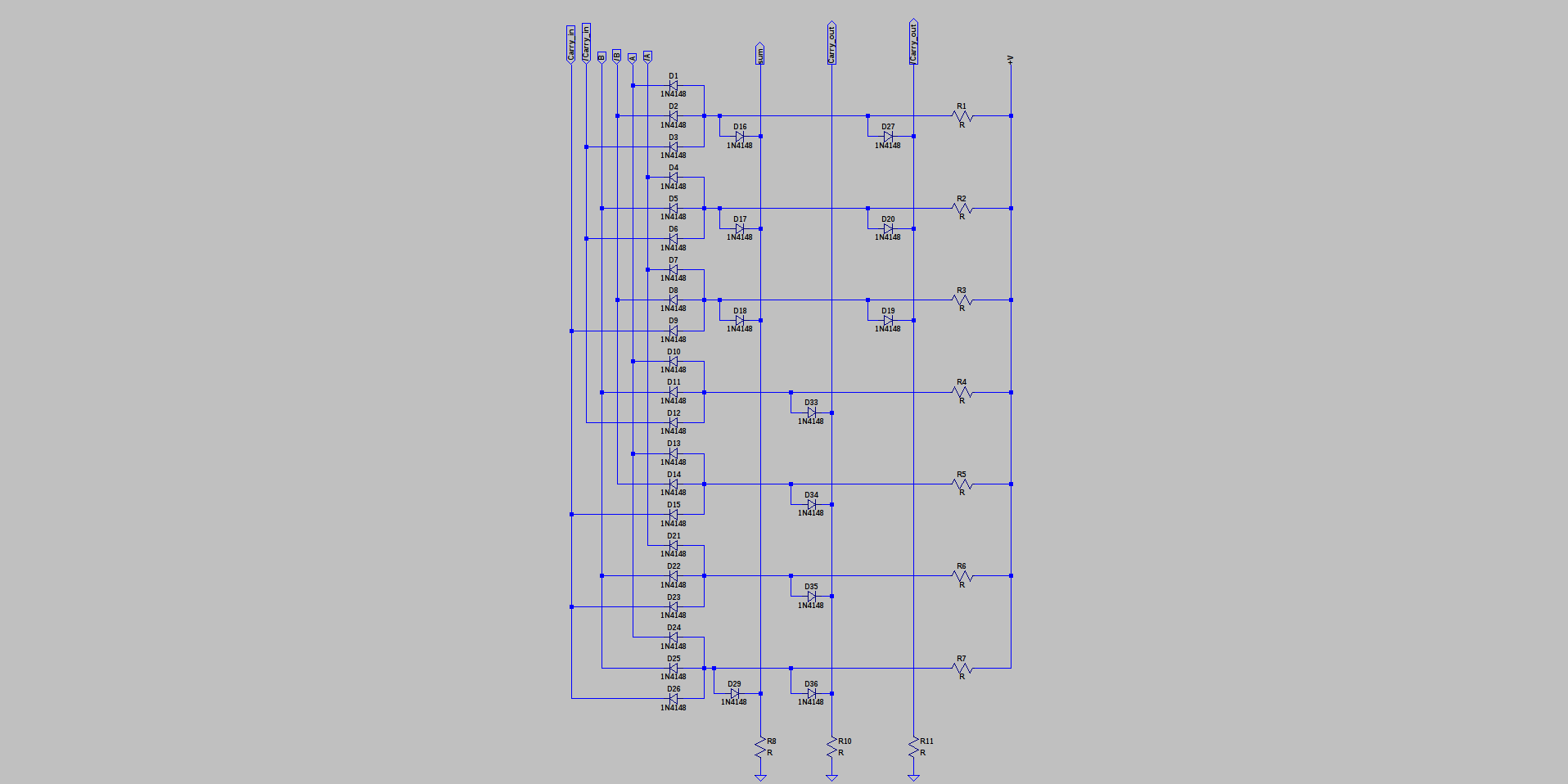Of course, if you can do anything with the two-level diode sum-of-products formulation, you can do anything. Here's a shot at a full adder:

It requires inverted and true inputs for A, B, and CarryIn, and output buffers for Sum, CarryOut and /CarryOut, but that's only 6 inverters. A quick try with NOR gates used 12. With six inverters, it only requires a single DDL01 board per bit in a ripple-carry adder. That's not bad at all. Of course, there's no reason you need to limit the active devices to just diodes, either. Simple transistor inverters would work here, as would relays or other amplifier/inverters, if you're into that kind of thing.
The operation is simple. The sum output is high if any single one of the inputs is high (three product terms) or if all three are (one product term). The carry output is high if any two or three of the inputs is high (four product terms). An inverted carry out is computed, too, because it's cheaper and faster to do it here than adding another inverter in series to the normal carry output.
I've convinced myself that with DDL, whose clock speeds are in the low kHz region, the speed of these cascaded diode gates are not an issue, and will greatly simplify and speed construction of a simple CPU. With faster technologies, you would have to re-evaluate this decision.
This full adder circuit can be connected to form a ripple-carry adder very easily, but there's no reason that a carry-lookahead circuit can't be constructed with the same AND/OR cascade. Maybe a 4-bit lookahead would strike a good balance between speed and number of components. I'll have to take a look at it.
 Ted Yapo
Ted Yapo
Discussions
Become a Hackaday.io Member
Create an account to leave a comment. Already have an account? Log In.